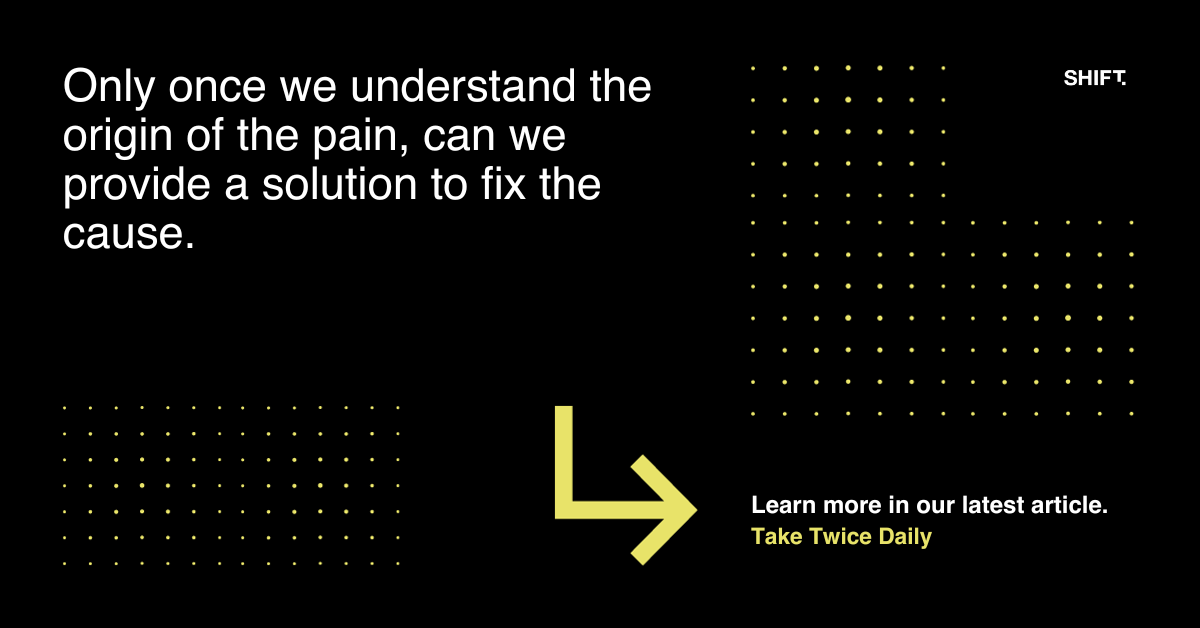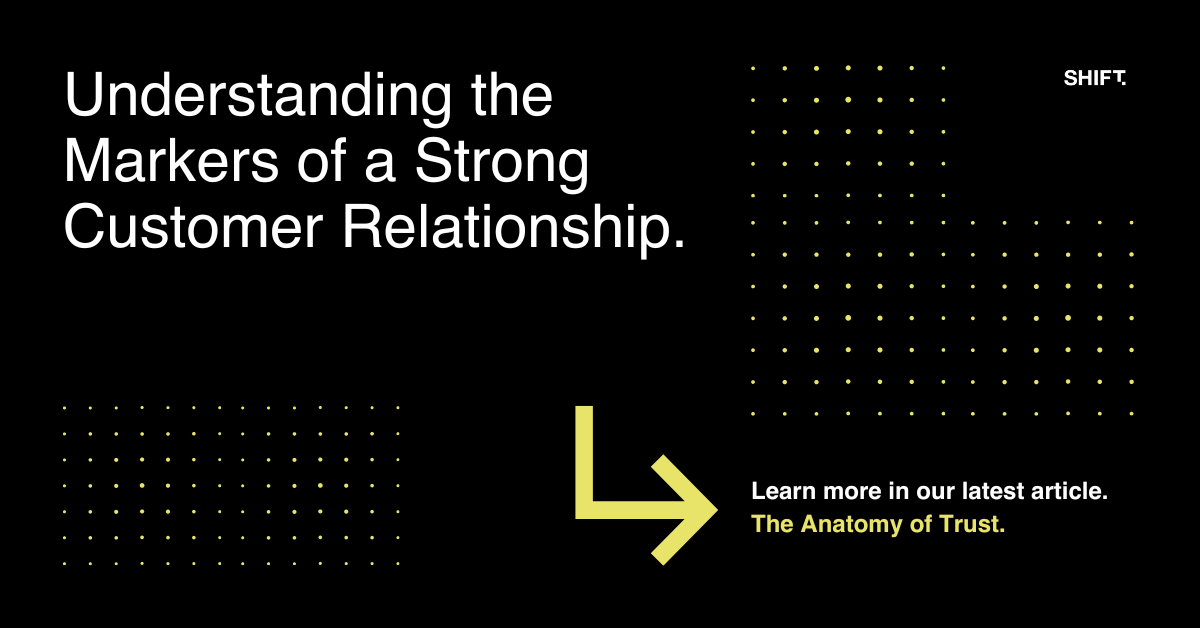Blog
Insights on relationship selling
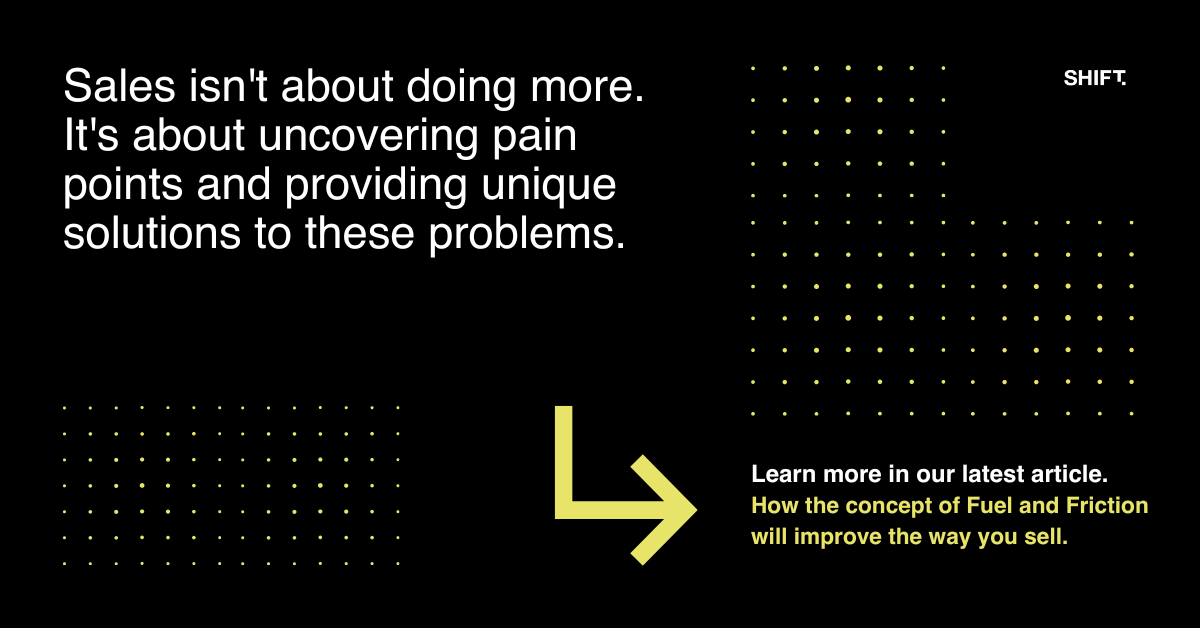
By Andrew Nisbet
•
August 31, 2023
When times are tough in sales, our natural reflex is to do what we are already doing, but more of it. We make more calls, lower our prices (even further), and hope that the increased output gets things back on track. This phenomenon isn't exclusive to salespeople. I'm sure the marketing department might be popping up in your mind, but in all areas of a business, when an increase in performance is required, we believe that more fuel onto the fire is the way forward. I was recently introduced to the concept of Fuel and Friction in Loran Nordgren and David Schonthal's book The Human Element. The idea neatly encapsulates the core ethos of Relationship Selling, and will certainly get you thinking about what you're doing today. The book shares the insight that when we want to sell a new idea, we naturally tend to beef up our proposition with fuel. We increase the discount. We increase the ad budget. We get the team to work overtime, free pizza included. The problem is that we haven't considered the points of friction that are stopping the person on the receiving end of our idea from moving forward. We have yet to take the initiative to remove the points of resistance, physical but more often mental, that hold someone back from accepting an idea. This reinforces perfectly Relationship Selling, understanding the customer, asking customer-centred questions and drilling down to find their pain point (friction). Take away the pain (friction), and you are much more likely to make the sale. “There is greater opportunity to create value by removing friction than by adding fuel”. Loran Nordgren and David Schonthal As salespeople, one of our biggest challenges is to overcome our hard-wiring that defaults to adding incentives, hype and enticements to our sales. This is the path of least resistance, and we love these paths. What I love about the concept of fuel and friction is that it provides us with a simple universal code to ensure we don't veer off into the path of least resistance. Adding more fuel is easy. Finding the friction requires us to understand our customers with empathy, which takes genuine care and skill. So, let’s look at this in a more practical selling situation: You are pitching to a Purchasing Manager (PM) who told you they want to change suppliers. Your proposal includes competitive prices and additional trading incentives (this is all fuel). On your next meeting, the PM says you are close. However, some other suppliers have different sorts of incentives. You come back to the PM with a review of your pricing and add some additional incentives (fuel), thinking this will get you over the line. At your next meeting, the PM informs you they are staying with their incumbent supplier. You may well have had the best proposal and the best outcome for the customer if they had come on board, but you failed to see the friction. We find the friction points by asking customer-centred questions and drilling down to get to the pain. We need to know these to get the customer over the line. Based on my personal experiences in selling to PMs, these are some of the friction points I have uncovered; If I change to another supplier, it will create more work for me to set them up in the system with prices, and I don’t have the time. If I change to another supplier, I will have to let the rest of the business know, and there are so many people to inform. I don’t have the time. If I change to another supplier and something goes wrong, I will have the people in the field want to kick my ass. I am not willing to take that risk. I will have to create new relationships with the supplier’s business and spend time with them, ensuring they know what service we want. I don’t have time. These are what stop the PM from coming on board with you. Knowing these friction points allows you to offer services and solutions that solve these pain points for them. Objections alone are insufficient because most objections are only skin-deep, price being the most widely used. They are not the real reason the customer doesn't want to move forward with you - they are not the pain or the friction. So, when you are next pitching something to a customer, don’t just have a fuel-based mindset. Ask yourself what the friction points are (because they are there), and if you don’t know, then your first step is to find out. Happy selling. Andrew Nisbet
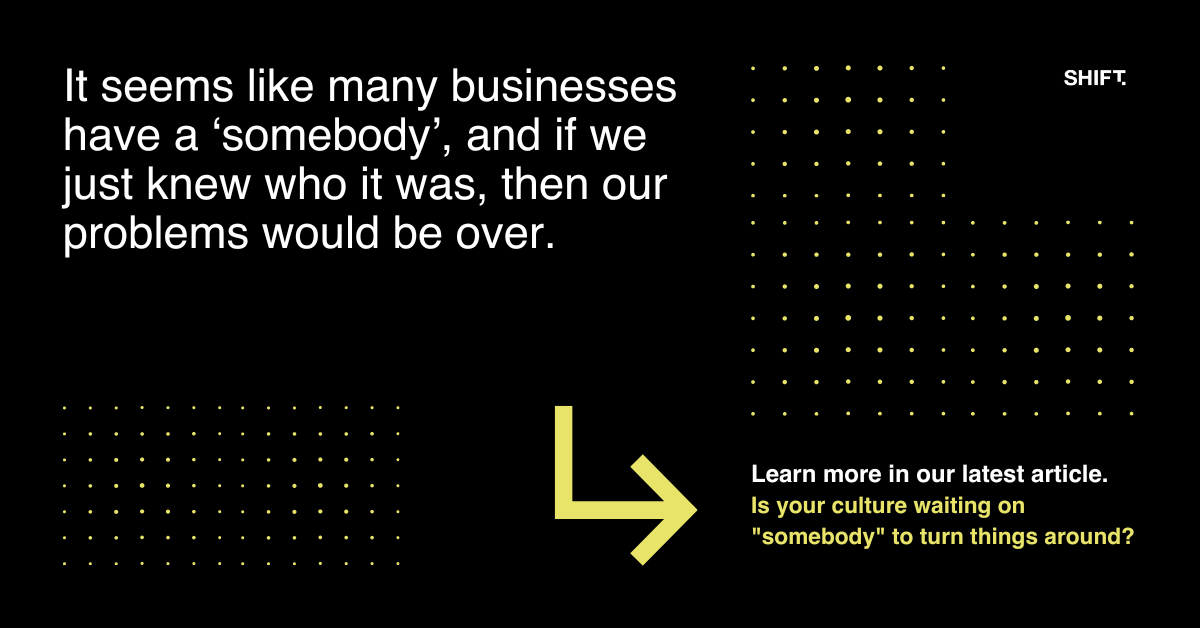
By Andrew Nisbet
•
August 16, 2023
“Somebody needs to do something about this. Otherwise, it is all going to turn to crap.” This is a common sentiment I often come up against when engaging with businesses to understand what their culture looks and feels like. It seems like many businesses have a ‘somebody’, and if we just knew who it was, then our problems would be over. A simple, one-line comment like this tells me so much about the people, the organisation’s culture, and the issues that must be addressed. These issues often look like: Deflecting rather than Empowering Blaming rather than taking Responsibility Fear rather than Courage Me rather than Team Mediocrity rather than Growth Concern rather than Control The issue is that the ‘somebody ’ comment is not generally made in the open, not made in the high five, tell a good story, back-slapping rhetoric that happens in leadership meetings or conferences. These comments are made in the halls, in passing, amongst colleagues, across business units, and worse still, to customers. It is this sub-culture that is the true culture of the business. Which breeds these kinds of general sentiments and beliefs “Nobody listens to what I have to say. It all falls on deaf ears.” “What can I do? I can’t make a difference.” “Yep, I brought that up plenty of times, and nothing happens.” “Plenty of talk around here and no action” These sentiments make their way to the customer and become part of what the customer experiences. At best, the experience is inconsistent, where individuals driven by their own values to make the customer experience great do so, and others don’t. At worst, the whole experience is consistently mediocre. The irony is that most companies will say they have a robust customer-centred culture; for some, they do. For the rest, they don’t take note of these windows of insight to seize an opportunity to re-focus on their culture to improve the customer experience. They’d prefer to live in blissful ignorance. Salespeople are the customer's essential connection to the company, and salespeople are as good as any in the organisation at deflecting blame to ‘somebody’ else, to pump themselves up by throwing somebody else ‘under the bus’. When we get these windows of insight that there is too much blame and not enough accountability, we must shift the focus. We have to shift our ‘locus of control’ from an external one, where we feel we are the victims of external things that happen to us, to an internal locus of control, where we take control of those things we can take responsibility for. Relationship selling is all about building trust – when we blame somebody for things outside our control in front of our customers, it diminishes trust. When we take control and responsibility for the things we can change, we build trust. Happy selling, Andrew Nisbet

By Andrew Nisbet
•
August 4, 2023
How good are you at truly hearing your customer's objections? As salespeople, switching off our internal noise can be tricky as we face customer objections. We can get defensive, start worrying about our overall performance, or just brush it off and completely miss the gold hidden beneath the objection itself. At this point, our feelings and our fears reinforce our belief that many objections are personal and therefore feel like a rejection when they are simply a signpost that there is a gap between the value you have offered and how the customer perceives the offer. After over forty years of working in sales, one of the most common observations I've come across is that the best salespeople have honed their ability to actively listen to their customers. They know that most objections are smokescreens - barriers the customer puts up because as yet they haven’t built enough rapport or enough trust with the customer. They serve their customers with genuine empathy and a desire to help, allowing them to see the subtle concerns that are the root of an objection well before they arise. They aren't focused on what's in it for them. They are focused on finding the win/win outcomes where everyone walks away from the transaction satisfied. So, how can we cultivate our skillset in active listening? This lifelong skill requires continual effort - we can always sharpen the axe when it comes to how well we listen to others. The first part of practising active listening is to be aware of objections and see them as indicators that you are not yet aligned with the customer's ideal outcome. They aren't personal. They are simply an opportunity to create more value. From this viewpoint, we remain open to objections rather than closing off to them. Secondly, with our heightened level of awareness for our customer's concerns, we can drill down further on the seemingly innocuous comments that might be hiding something more. Don't hesitate to ask these questions because in the process, you are both showing the customer you are genuinely listening to them and finding new ways to create value. With this in mind, my challenge this week is to ask yourself how well you have been listening to your customers. Be honest with yourself. Are you listening with the intent to understand, or are you listening with the intent to reply based on what you want to tell the customer? "First seek to understand, then be understood" - Dr Stephen Covey If there is room for improvement - and there always should be - start practising your active listening muscle with your next sales call or meeting. Even better, practise it with your partner or a friend over a coffee next time you're with them. See how the conversation goes. I'm sure you'll cover new territory you didn't even know existed. Done right, your ability to practice active listening will profoundly impact your work relationships. You will also find that meeting and exceeding your KPIs won't be such a forced effort - it will just be a by-product of how you carry yourself as a salesperson. Happy selling. PS - If you're facing a challenge in sales right now you'd like me to address, send it in, and I'll respond to it in my following newsletter.
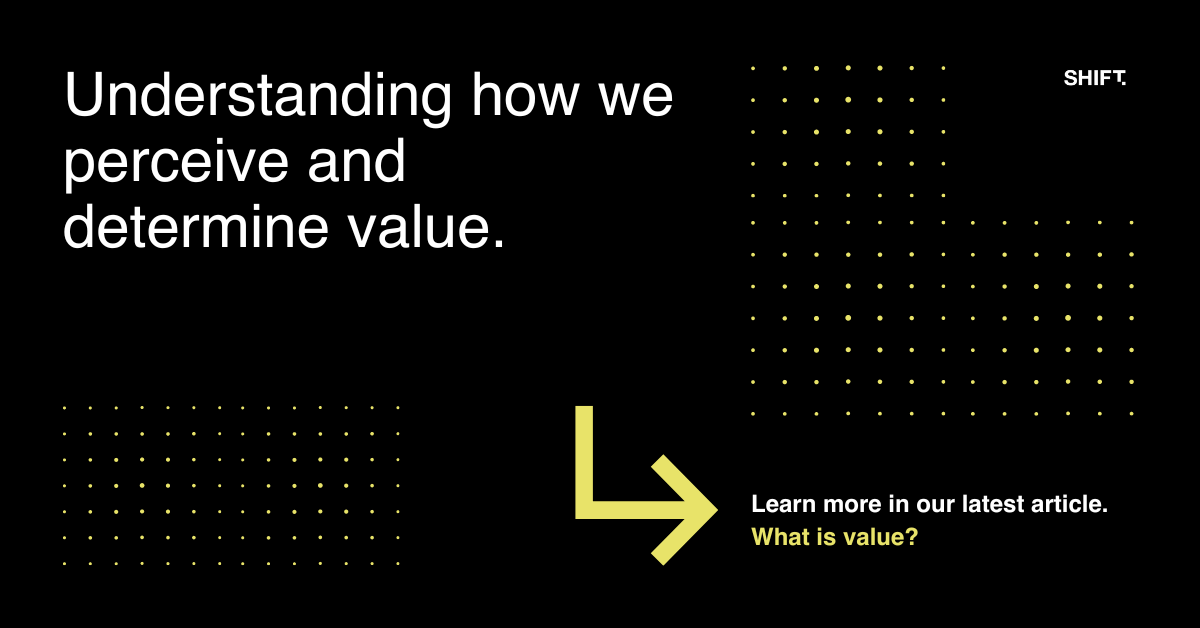
By Andrew Nisbet
•
July 20, 2023
‘How much should I charge? How much do you think customers are willing to pay? What if I am too expensive?’ These are just some of the questions (there are many more) that salespeople and businesses think about when trying to set prices and make a profit. These are not easy questions to answer. Price is what you are asked to pay; value is what you are willing to pay. Before we go on to discuss value more generally, I want to tell you something very important – people buy on emotion and justify with logic. Think of the last time you paid more for something than you intended to, and ask yourself why. You will find that you bought this item because of how it made you feel or was going to make you feel. Our emotions are part of the brain’s limbic system, which is the non-verbal part of our brain; it has no words and cannot speak – it feels. This makes it hard to put feelings into words, so we use logic to justify our buying decisions. As salespeople, we need to understand just how important emotion is when selling. But unfortunately, much face-to-face selling has become logical in its approach: ‘Here’s what we do and here’s our product. Here are the features and benefits. Do you want to buy some?’ As a business, you can set any price based on mathematical, financial or market-driven algorithms or on gut feel. However, value is the subjective decision of the customer based on many emotions and is highly individual to the person and the situation. What is valuable to one person can be less valuable to another, even in the same market and influenced by the same market conditions. There are several different forces at work when we look at value and how customers perceive the value of what they’re buying. The Price versus Value model pictured below depicts how these forces work together. There are three fundamental forces: 1. Emotional Connection – How emotionally connected is the customer to what they’re buying? 2. Perceived Value – How much value does the customer see in what they want to buy? 3. Willingness to pay – How much is the customer prepared or willing to pay?
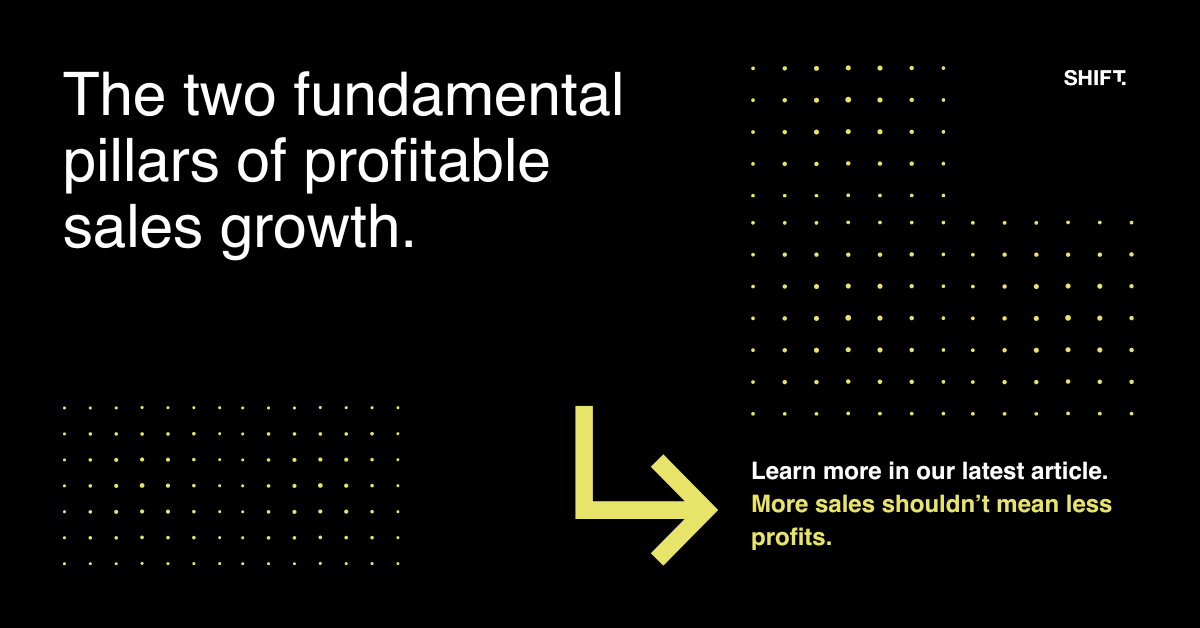
By Andrew Nisbet
•
July 6, 2023
“If we want to improve our margins then we will have to reduce our sales growth targets” With this mindset, we generally see periods of strong sales growth, however with flattening or declining margins. When the markets shift, and sales opportunities reduce, margins then become the focus. However, we then generally see very little improvement in margin because it’s tough to action, and a flattening of revenue then becomes a double-hit on our bottom line. It is any wonder that revenue growth gets all the focus. What happens with this mindset is that we decouple the value we offer from the price we charge. Once we do that, we then find we are offering all of our value and yet continuing to discount it to maintain and grow revenue. A vicious cycle leading to a downward spiral. The answer is to couple the value we offer with the price we charge. Simple but not easy. Profitable sales growth has to become the focus, the mantra. There are two fundamental pillars to achieve success: 1 - Systems and processes 2 - Belief and behaviours These are so intertwined that one without the other will not see you fully succeed and in fact could see you go backwards because of ‘unintended consequences’. We need to ensure we have pricing systems and processes in place that support and capitalise on our ability to sell the value of what we do. These systems also then need to give us the data to be able to make better pricing decisions to maximise our profitability. However, without the customer seeing and feeling the value of our offer then the systems and data will not be enough. We have to spend as much time with our salespeople to get them to understand the value of their offer, believe it and then pass on this belief to the customer. This then becomes the inbuilt behaviours of the sales teams, this then becomes the sales culture. The coupling of these two fundamentals and then doing the work is the real differentiator. This is where win/wins happen.
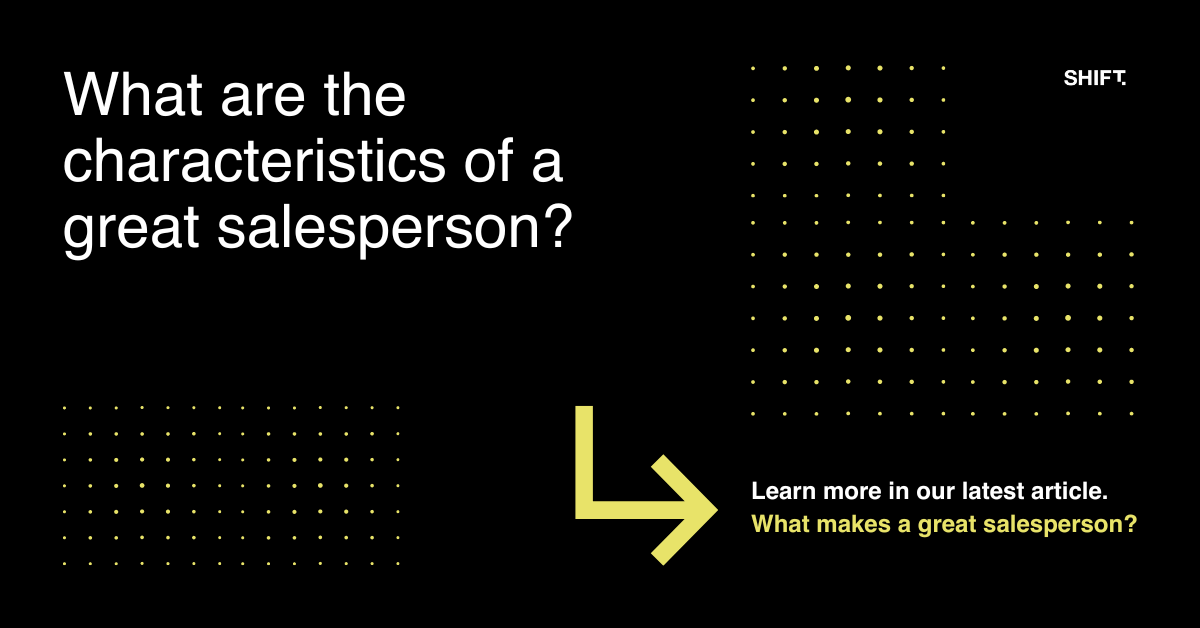
By Andrew Nisbet
•
June 26, 2023
I realise that in writing this I may touch a nerve or two and I acknowledge that there are many successful salespeople, and they are not all the same. I suppose it depends on how you define success and how you define greatness. You might define success purely on the sales revenue number. You might define success as the number of calls made. You might define success on how long the salesperson has been selling or you might just define success on whether the salesperson is a nice person, and how much their customers like them. Maybe a combination of the above. And while these might be some attributes of a great salesperson, I do believe there are some more substantial attributes. As a salesperson myself, working with sales teams for many years, training and coaching salespeople and seeing many salespeople grow from good to great, there are the same fundamental attributes that I believe great salespeople share. 1 - Empathic – They understand how important empathy is in creating trust and building a relationship. They know how to use customer-centric questioning to understand more about the customer's world, making them more comfortable in opening up. 2 - Customer Centric – They understand that the customer is the reason their role exists. They are advocates of their business in front of the customer and advocates of the customer's business inside the company they represent. They follow the customer not the sale, knowing that done well the sales always come. 3 - Disciplined – They understand that building relationships is a dance and a journey. That it is many interactions with purpose to build the trust that results in win/win outcomes. They know that this takes discipline to stay the course and not give up, to keep positive tension in the sales process until the goal has been achieved. They also have the discipline to keep engaging with the customer to reinforce the trust. 4 - Belief – They believe in themselves and the company they work for. They understand and believe in the customer promise their company stands by and are able to pass this belief on to their customers. This belief enables them to handle objections effectively. 5 - Solution and Value Centric – They understand that selling is about providing solutions and the value these solutions give the customer. They understand that the product they sell is only a small part of the overall solution. That it is everything that sits around the product that makes the difference. They understand that price is not the key determinant for people to buy. Unless of course, the customer doesn’t see the value. Revenue, profit, and quality of calls are an outcome of the above attributes. They are an indicator of how well a salesperson develops the above skills and attributes. The good thing is that all of these things can be learned, developed, and improved upon. Like many things in life, the path to being great is a journey, not a destination.
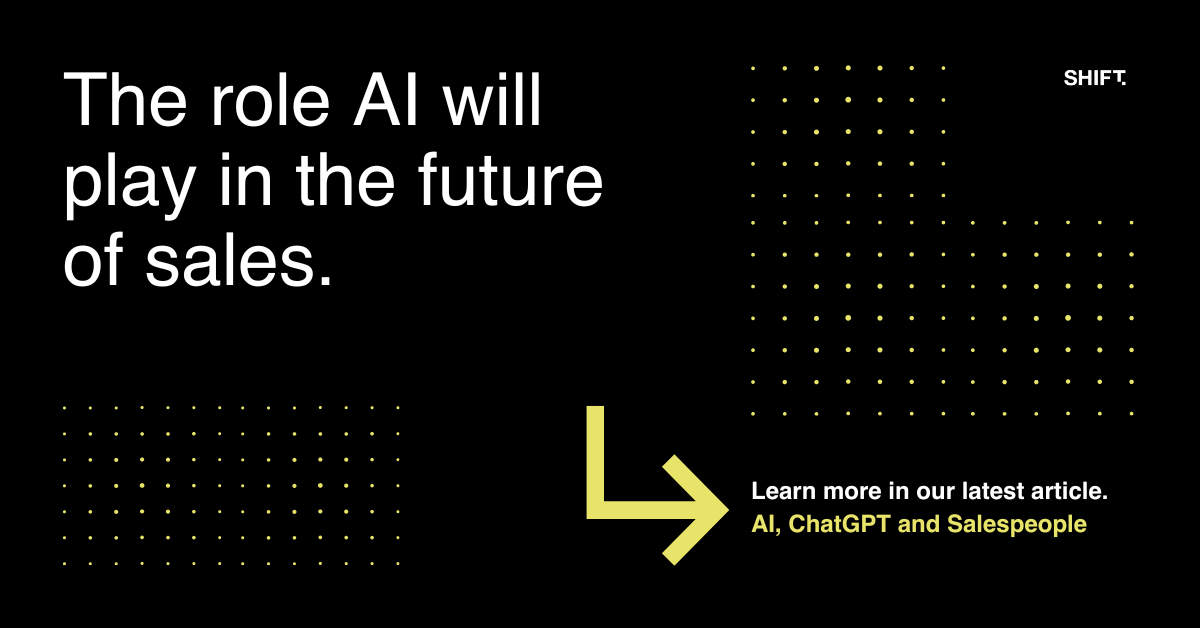
By Andrew Nisbet
•
May 25, 2023
The big buzz at this moment is AI and ChatGPT. So many unanswered questions, concerns, and opportunities. Everyone has an opinion, their version of truth as to whether it is a good thing or a bad thing and what disruption it will have on the future of work. I have been asked many times since ChatGPT arrived as to what I think the platform will do for the future of selling. Right at this point I am hearing Maxwell Smarts’ voice from the 60s TV show Get Smart when pondering one of K.A.O.Ss evil but disastrous plans “If only they used it for good instead of evil”. I know, I am showing my age. I am aware of the irony of putting my thoughts in writing as just another opinion and truth amongst many. I do believe that AI will find a place that supports business and will add another dimension to the way we communicate. I also believe that it will have many unintended consequences that won’t be good for business or broader society – very much like social media. In the world of sales, I have a much firmer belief. I believe that salespeople will continue to be the magic between what a brand promises and what a customer experiences and feels. AI will aid salespeople in their endeavours to produce better content perhaps, find added insights perhaps, speed up the process of finding information perhaps, maybe even write better stories, but it will not replace the fundamental need for human connection. The pandemic showed us just how important human connection is to our mental health and to the health of our communities and tribes by taking it away for a period of time. The building of trust is a series of human interactions where we do the dance of building relationships. Used for good, AI will help salespeople enhance the dance. Used for evil, AI will erode trust and drive people to want the human connection even more so. AI may give us much more content to play with (lucky for Marketing I suppose), but it is authenticity, empathy and purpose that makes the connection, something that only humans can deliver. Salespeople now and in the future need to understand this and ‘be the magic’ . The dance is still the dance, just maybe some different music and some new steps. Andrew Nisbet
Subscribe to the Shift Newsletter
Have the latest articles sent directly via email.
Thank you!
You have successfully joined our subscriber list.
© Shift Perspectives 2023 | Site by Roadmap Digital

